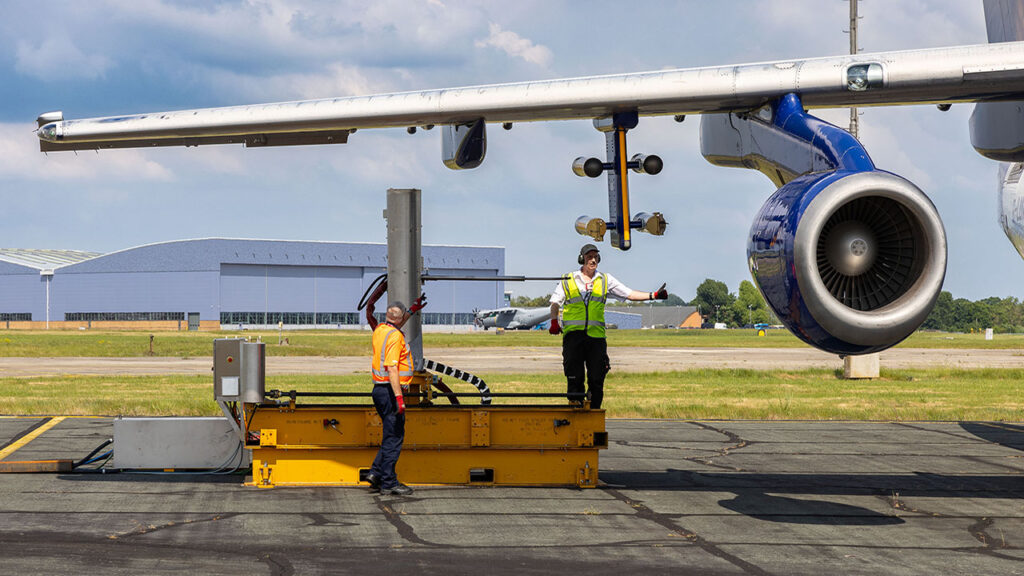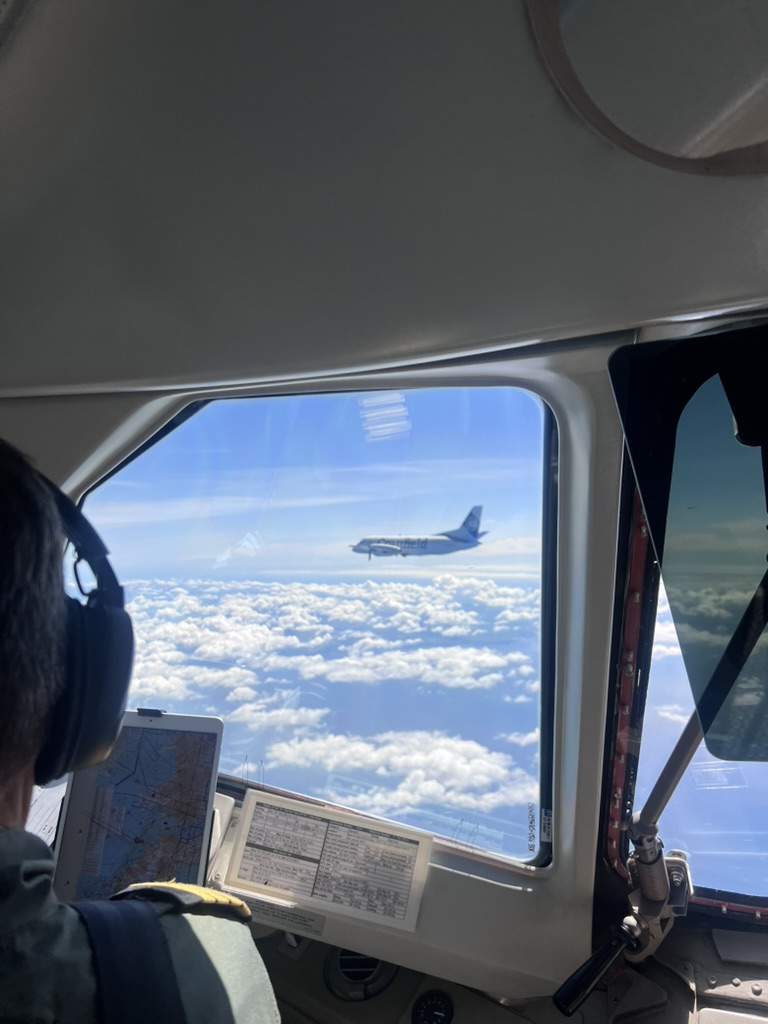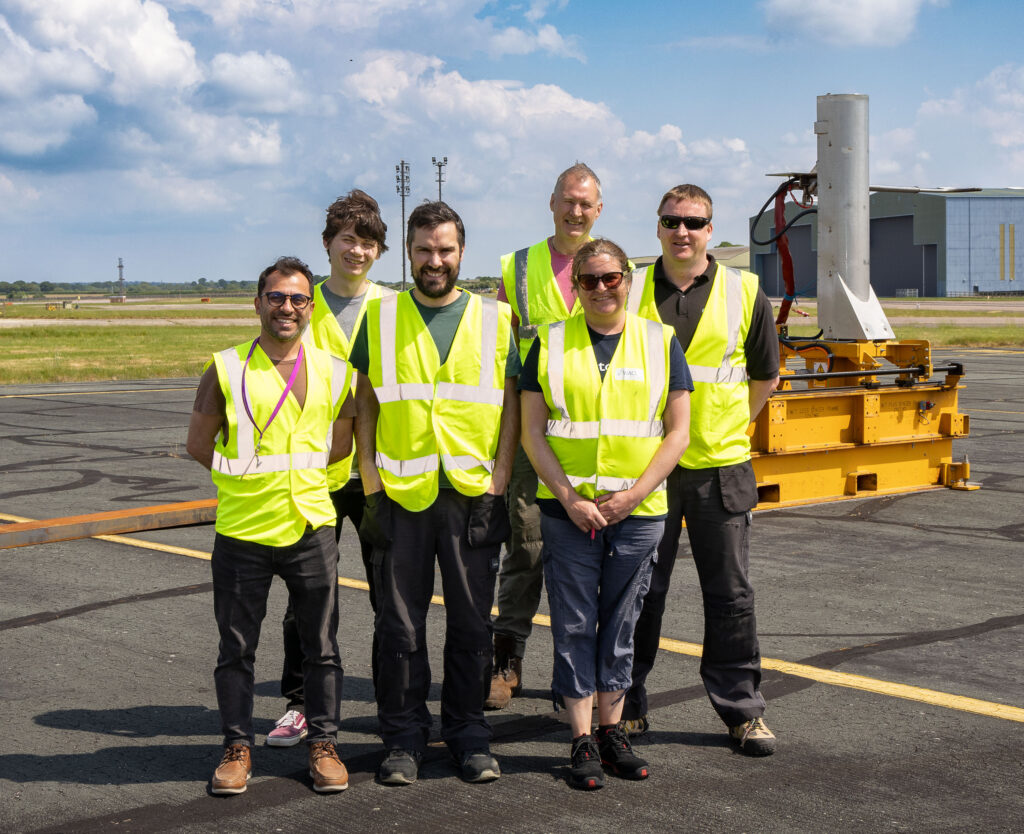
Scientists launch UK’s first sustainable aviation fuel emissions “chase” experiment
Scientists are looking at how pollutants from aircraft could be reduced by using sustainable aviation fuel. Teams from the FAAM Airborne Laboratory, universities, research centres and aerospace companies are working together on a “chase” experiment, the first of its kind in the UK.
A pioneering project called GRIM-SAF (GRound-Based and Inflight Measurements) is investigating how sustainable aviation fuel (SAF) could reduce aircraft emissions of soot and volatile particles, and a range of gases including nitrogen oxides, often referred to as the non-carbon dioxide (CO2) emissions.
Led by scientists from the National Centre for Atmospheric Science, Cardiff University, the University of Manchester, Manchester Metropolitan University, the University of York, and Rolls Royce, this research marks a major step forward in understanding how different aviation fuels change the impact of flying on air quality and the climate.
In a UK-first experiment, two aircraft flew in formation – with one trailing the other to sample its emissions – to compare the pollutants produced by sustainable aviation fuel and traditional jet fuel. Previous in-flight emissions work in the UK has involved following several miles behind other aircraft – the aircraft involved in GRIM-SAF were able to get within 60m of each other. Both aircraft also landed at RAF Brize Norton to make detailed ground-based measurements with the goal of linking this to the in-flight work.


A team of scientists led by Dr Paul I. Williams, from the National Centre for Atmospheric Science and University of Manchester, conducted a series of experiments to learn more about the non-CO2 impacts of SAF on the environment.
The FAAM Airborne Laboratory’s atmospheric research aircraft “chased” Cranfield University’s National Flying Laboratory Centre research aircraft to measure the emissions it produces during flight.
“Although this type of experiment, with one aircraft following another in formation, is very useful for scientists to get an understanding of the emissions produced by burning different types of fuels, it is environmentally costly. GRIM-SAF aims to understand the emissions on the ground, and correlate these to emissions at altitude so future experiments don’t rely on chasing aircraft with other aircraft,” says lead researcher Dr Paul I Williams.
With sustainable aviation fuel use gaining momentum, find out how GRIM-SAF will be uncovering the fuel’s full environmental potential.
What’s emitted by aircraft and what are their impacts?
“We often talk about the environmental impact of air travel in terms of the carbon dioxide emissions produced, but this is just one part of the picture. Effective Radiative Forcing (ERF) is a measure of a particular pollutant or sector’s impact on climate. Non-CO2 emissions can contribute up to 66% of aviation’s ERF, compared with 33% from CO2. Additionally, it’s important to understand what effects they have on our local air quality around airports,” says Dr Paul I Williams.
Nitrogen oxides, known as NOx, are significant contributors to air pollution, impacting air quality and affecting our climate. The majority of NOx emissions presently come from cars and HGVs, but as electric cars become more widespread the aviation sector will become responsible for a larger share of this.
The non-CO2 emissions and other substances, such as lubrication oil vented from engines, can cause contrails to form. Contrails are long, thin clouds made of ice crystals, which form when water vapour condenses on the tiny particles emitted by aircraft engines. Contrails sometimes spread out over large areas, and can affect the Earth’s climate in the same way that naturally-formed clouds do.
Emissions from aircraft aren’t just limited to the skies; ultrafine particles have been detected many kilometres downwind of airports at ground level, especially major airports that see heavy air traffic. Increased particulate matter (PM) concentrations in the air is a sign of poor air quality, which can be harmful for people living in these locations.
What is SAF’s impact on cloud formation and local air quality?
In 2023, scientists from the National Centre for Atmospheric Science found that the FAAM Airborne Laboratory atmospheric research aircraft’s engine emitted less soot when it was running on SAF compared to traditional aviation fuels.
Previous research has found that climate models do not accurately calculate NOx levels at altitude, which makes it harder for scientists to make predictions about future climate change.
GRIM-SAF aims to give scientists a better understanding of gaseous and particulate emissions from aircraft. In addition to the chase experiments, a team based at RAF Brize Norton used a specialist sampling probe to monitor the non-CO2 emissions from these aircraft from the ground to correlate future ground-based measurements with in flight predictions.
The FAAM Airborne Laboratory’s aircraft will also sample its own exhaust emissions from SAF and traditional fuel in several flights by flying in a “doughnut” or “racetrack” pattern. Test flights in October 2024 confirmed that the FAAM aircraft can fly along and detect its own exhaust trails.

Acknowledgements
The GRIM-SAF team includes the National Centre for Atmospheric Science, Cardiff University, University of Manchester, University of York, Manchester Metropolitan University, Cranfield University, and Rolls Royce. The GRIM-SAF team would like to thank the support given by RAF Brize Norton in providing a ground based site.
